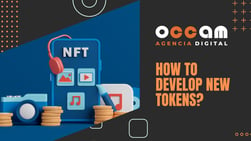Index Content
Lifetime Value is a projection of the net return on investment that a customer brings during their buyer's journey. A sales and marketing metric that is used to measure the total revenue per customer value. This estimate is a forecast, as we cannot know in advance how long customers will stay with us, how often they will buy or how much they will spend with each customer. It is the company's job to ensure that customers are motivated to stay with you.
The longer a customer spends with our company, the higher his Lifetime Value. With this metric we determine the estimated revenue we can generate with a customer during our business relationship with him.
This term forms part of the set of KPIs, also known as Key Performance Indicators, which we must pay attention to when analysing the growth in sales and the profitability of our campaigns, a fundamental step in guaranteeing the success of our Inbound Marketing strategy.
how is Lifetime Value calculated?
The average price per customer at purchase -preferably net, to be more precise- multiplied by the number of purchases of our product per year multiplied by the lifetime of the customer (the number of years we have been customers).
There must be a positive balance between the customer acquisition cost, which must be lower than the LTV because the cost must be lower than the benefit, if we want to get a positive ROI.
how do I improve this metric? As we have already discussed, it is the company's task to ensure that our customers want to stay with our company. The only way is to establish a unique and exceptional relationship with customers. Users must feel listened to, understood and cared for.
Measuring customer value and implementing a strategy based on customer value can enable companies to optimise the profit generated by policyholders. With digital advancement, customer experience is another key element in a digital transformation strategy within the company. It is necessary to focus on creating a strong digital brand, which makes you an authority and a reference for your customers.
There are two strategies to optimise the total value of the consumer as human capital: crosselling and upselling, both techniques used to increase sales.
Crosselling
Translated as cross-selling, a well-known technique for increasing sales volume, cross-selling is the process of selling a different product or service to a customer to increase its sales value. It suggests other relevant products that users can buy in addition.
Five tips for applying crosselling
- Listen to your customer and know their wants and needs: relevant products may be different for different customers.
- Know that there is a time for everything: some products or services are ready for cross-selling immediately, while for others it may be better to wait to offer an additional product.
- Sell with consistency: make sure that the additional product is related to the product that the customer has already bought.
- CTA applied in e-commerce: invite your customers to view products related to their purchase.
- Offer valuable add-ons and gain credibility with customers: offer a good deal to customers, so that they trust your suggestions.
Upselling
This sales technique tries to persuade the customer to buy a better or higher cost version of the same product, increasing the price and functionality of the original purchase.
Seven tips for upselling
- Choose the right upsell: there are multiple ways to apply this strategy, choose the product or service that best suits the needs and wants of your customers.
- Always offer upselling: the more upselling opportunities you offer to customers, the more opportunities you will have to sell. Try to offer the customer the possibility to improve their purchase.
- Don't be intense: the interest should be mutual, give them space to make the final decision. Listen to their queries and address their doubts.
- Make your offer coherent: if your customer is looking for a product of one type, you should offer a product or service that the customer identifies with and fits their needs.
- Get the language right: sell the idea of investing in a higher-end product by alluding to the benefits of one over the other. Be careful not to undervalue the other product!
- Make unlimited promotions with the higher-end products, to awaken that need in your customers.
- People respond better to the patterns related to number 3: if you offer the same product by changing the range and the price. There are several studies that show a tendency to choose the product that has the price between the lowest and the most expensive.
An alternative when we want to increase the LTV of our company is to seek to maximize customer retention, is to put customers at the centre of the company and take care of them. This task cannot be done without CRM or Customer Relationship Management, for this we can implement Hubspot software in our Inbound Marketing strategy. They are experts in CRM, they track and manage the interactions between a company, its customers and prospects. They allow companies to forecast revenue and analyse sales volumes, productivity. It is a free software that integrates with Gmail, Office, Windows and many more. Find out more about the benefits of implementing Hubspot in your strategy .
Customer retention is a company's ability to retain its customers for a longer period of time. Customer retention often depends on a company's ability to capture the attention of its audience and provide an experience that converts them into loyal brand fans. In order to keep the audience consuming what the company offers, strategies must be developed to avoid losing audiences. This percentage measures the number of customers a company retains at the end of a given period by comparing the number of new customers gained to the number of customers lost.
Through Customer Relationship Management (CRM), we can increase the retention rate and in turn increase sales volume by applying upselling and cross-selling techniques to increase the value of the customer in our company's total profits.





